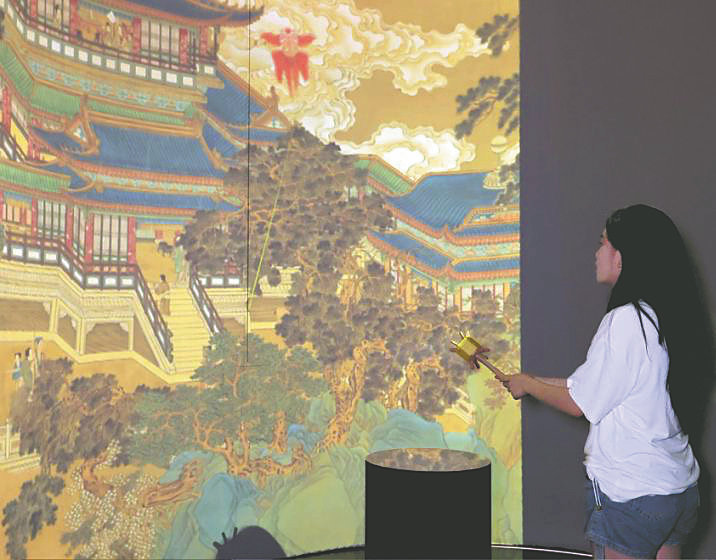Digital wizardry brings cultural heritage to life
From floating wine vessels to traditional village fairs, viewers immersed in virtual experiences


Fairground attractions
Expo visitors were also able to experience the Majie Quyi fair through an AR program developed by the lab.
The fair was named a national intangible cultural heritage in 2006.Boasting a history of more than 700 years, it was traditionally hosted during Spring Festival in Baofeng county, Henan, and featured various Chinese folk arts, including ballad singing, comic dialogues, clapper talk, and crosstalk, all of which remain popular among Chinese people.
"Using technologies such as 3D modeling and spatial positioning, we have brought the grand scenes of the fair into an AR virtual environment," Zhang said.
Through motion-sensing devices, visitors can touch and "play" the instruments of the performing artists and read their scripts, he added.
Expo visitors also had the opportunity to experience flying a kite indoors through the Kite Travels program developed by Shanghai-based digital technology firm ALight, and artist Chen Hailan.
"By pulling a kite string on a screen, an audience member can not only control the rise and fall of the digital kite, but also feel the tension in the string," said Chen, who was born in Yangjiang, Guangdong province.
Yangjiang's kite craftsmanship was named a provincial intangible cultural heritage in Guangdong in 2006.
Each time a kite is launched, its design changes within the confines of a digital painting that features a Chinese garden and traditional architecture.
"We not only want the audience to see and experience it, but convey the culture embedded within it," Chen said, adding that the kites are not just a cultural symbol, but also carry joyful childhood memories.
She said she focused on the kite in the hope of preserving traditional cultural elements through modern technology, including interactive technology and VR, to give it new life and expression.
Chen and ALight decided the background should be a classical painting by Zhao Boju, an artist during the Song Dynasty (960-1279). The work features historical pavilions, and mountains touched by floating clouds.
"It was selected due to its rich elements that suit the spatial design of the whole exhibit, transitioning from distant to near elements. The artwork's content and style also fit well with the narrative of traditional kite culture," Chen explained.
To provide the user with a real sense of interaction, the creation team used a mechanical device to simulate the pulling of the kite string. Algorithms were also used to simulate aerodynamics, with the kite swaying as it flies through the air, Chen said.
To better engage users, a new kite style is randomly generated every new flight.
"This not only allows each visitor to experience different kites, but also ensures that every interaction is unique," she added.
This digital kite flying experience has already been displayed at several cultural and digital art exhibitions. Chen said she has been overwhelmed by the positive and enthusiastic response of visitors.
"Many of them said the interactive experience brought back the pure joy of their childhood memories associated with flying kites, and the digital interaction provided them with a fresh perspective and experience of traditional culture," Chen said.


















